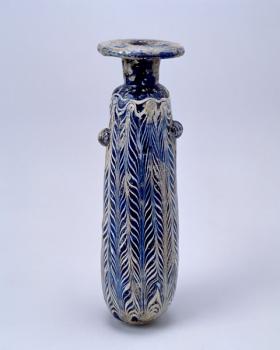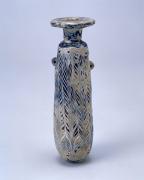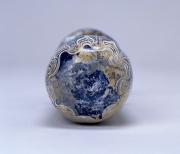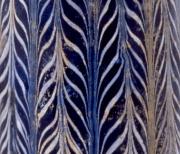収蔵資料からHighlights
Alabastron
ガラス Glass シリア Syria 紀元前5~3世紀 5th-3rd century B.C.E. 高20.0 cm, 径5.5 cm H. 20.0 cm, D. 5.5 cm このようなガラス製の香油瓶は、紀元前6世紀から前1世紀ぐらいまで地中海地域で生産され、広く流通していました。 Such core-formed vessels were produced in the Mediterranean area and were widely spread throughout the Roman Empire from the 6th to the 1st century B.C.E. This type of vessel derived from the shape of Greek ceramic (alabastron) and was probably used as a container of scented oil. The surface zigzag pattern was created by combing the molten glass threads in the desired direction. Perfume flasks with beautiful shape and decoration seem to have attracted the users since ancient times. |




